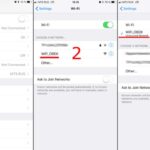Encountering the Obdii Code B2725 can be a frustrating experience for any vehicle owner, especially when it impacts your four-wheel drive (4WD) system. This code, often related to the transfer case switch, can lead to a cascade of issues affecting your vehicle’s performance and handling. As an auto repair expert at autelfrance.com, I’m here to break down what B2725 means, its potential causes, symptoms, and how to troubleshoot it effectively.
Decoding OBDII Code B2725: Transfer Case Range Switch Circuit Malfunction
The B2725 diagnostic trouble code (DTC) is generally defined as a “Transfer Case Range Switch Circuit Malfunction”. This indicates that your vehicle’s Powertrain Control Module (PCM) or Transfer Case Control Module (TCCM) has detected an issue within the circuit of the transfer case range switch.
The transfer case range switch is a crucial component in 4WD vehicles. It signals the TCCM about the desired drive mode selected by the driver via the 4WD switch on the dashboard. This switch allows you to shift between 2WD, 4HI, 4LO, and sometimes Auto 4WD modes, depending on your vehicle. When the TCCM detects a malfunction in this switch circuit, it triggers the B2725 code.
Common Symptoms Associated with B2725
When the B2725 code is active, you might observe several symptoms, including:
- “Service 4WD” Light: This is a common indicator on your dashboard, alerting you to a problem within the 4WD system.
- Inability to Shift Transfer Case Modes: You may find it difficult or impossible to switch between 2WD and 4WD modes. The transfer case might remain stuck in one mode.
- Intermittent 4WD Engagement: The 4WD system might engage or disengage erratically, leading to unpredictable handling.
- No Response from 4WD Switch: The indicator lights on your 4WD switch might be unresponsive, or the system might not react when you press the buttons.
- Transmission Shifting Issues: In some cases, a faulty transfer case switch circuit can indirectly affect transmission shifting, as the vehicle’s computer might be confused about the drive mode.
- Unusual Noises from Transfer Case Area: Grinding, clicking, or popping sounds might emanate from the transfer case if it’s not engaging or disengaging correctly.
Potential Causes of OBDII Code B2725
Several factors can trigger the B2725 code. Pinpointing the exact cause requires a systematic diagnostic approach:
- Faulty Transfer Case Range Switch: The switch itself might be defective due to wear and tear, internal damage, or electrical issues.
- Wiring Problems: Damaged, corroded, or shorted wiring within the transfer case switch circuit is a frequent culprit. This includes issues with connectors, terminals, and the wiring harness leading to the TCCM.
- TCCM Malfunction: Although less common, a failing Transfer Case Control Module (TCCM) can misinterpret signals from the switch or incorrectly diagnose a circuit fault.
- PCM/BCM Issues: In rare instances, problems with the Powertrain Control Module (PCM) or Body Control Module (BCM) could contribute to misdiagnosis or circuit errors.
- Loose or Corroded Connectors: Loose or corroded electrical connectors at the transfer case switch, TCCM, or PCM can disrupt the circuit and trigger the code.
Diagnosing and Troubleshooting B2725
Troubleshooting B2725 requires a methodical approach, often involving these steps:
- OBDII Scan and Code Verification: Use an OBDII scanner to confirm the presence of the B2725 code and check for any other related codes.
- Inspect the Transfer Case Switch:
- Visual Inspection: Examine the 4WD switch on the dashboard for any signs of damage or loose connections.
- Resistance Test: Use a multimeter to test the resistance of the switch in different positions, comparing readings to the vehicle’s service manual specifications.
- Wiring and Circuit Inspection:
- Visual Check: Carefully inspect the wiring harness and connectors associated with the transfer case switch for any damage, corrosion, or loose connections.
- Continuity Test: Use a multimeter to check for continuity in the wiring between the transfer case switch and the TCCM.
- Voltage Test: Verify proper voltage supply to the transfer case switch circuit.
- TCCM Evaluation:
- Connector Inspection: Inspect the TCCM connectors for corrosion or damage.
- TCCM Replacement (with Caution): If wiring and switch tests are inconclusive, consider the possibility of a faulty TCCM. However, ensure proper diagnosis before replacing it, as TCCMs can be expensive and may require programming.
- Professional Diagnosis: If you are not comfortable performing these steps, or if the problem persists, it’s best to consult a qualified automotive technician. They have specialized tools and expertise to diagnose complex 4WD system issues.
Case Example: 1999 Blazer 4WD B2725 Troubleshooting
Let’s consider a real-world scenario similar to one encountered by a 1999 Chevy Blazer owner. This individual faced a “Service 4WD” light and shifting problems after replacing a faulty encoder motor. Despite replacing the TCCM, the B2725 code emerged, pointing towards the dash switch.
Alt text: An OBDII scanner tool displaying diagnostic trouble codes during car maintenance.
The troubleshooting process in such cases might involve:
- Verifying B2725 Code: Confirming the B2725 code using an OBDII scanner.
- Switch Testing: Testing both the old and new dash switches for proper resistance, as was done in the original case.
- Wiring Checks: Meticulously checking the wiring and connectors between the dash switch and the TCCM for continuity, shorts, and damage – as the Blazer owner did, confirming no shorts or water damage.
- TCCM Suspicions: Considering the possibility of a defective TCCM, even a new one, as highlighted by the Blazer owner’s experience. Trying a known good TCCM, if available, is a valuable step.
- Transmission Behavior Analysis: Noting any unusual transmission behavior when the TCCM is connected, as the Blazer owner observed with the strange shifting patterns when the TCCM was plugged in. This can provide further clues.
Alt text: Automotive technician inspecting car wiring harness and electrical connections beneath the dashboard.
In this Blazer case, the unusual transmission behavior when the TCCM was connected, even in 2WD, strongly suggested a potential TCCM issue or a deeper communication problem within the 4WD system triggered by the new TCCM or a persistent underlying fault.
Conclusion
OBDII code B2725 signals a malfunction in the transfer case range switch circuit, which can stem from various issues, ranging from a faulty switch to wiring problems or TCCM issues. A systematic diagnostic approach, starting with code verification and progressing through switch, wiring, and TCCM checks, is crucial for effective troubleshooting. Remember to prioritize safety and consult a professional if you are unsure about any diagnostic or repair procedures. Addressing B2725 promptly will ensure your 4WD system operates reliably and your vehicle performs as intended.
Note: The image URLs used above are placeholders and for illustrative purposes for demonstrating image integration with alt text. You would replace these with actual image URLs relevant to the topic.


